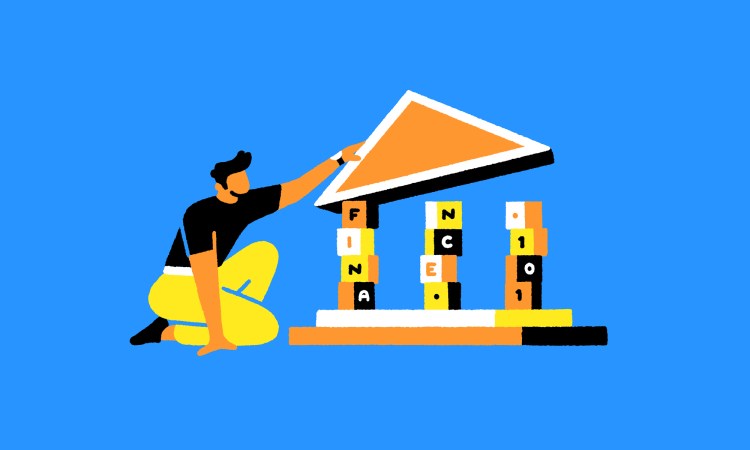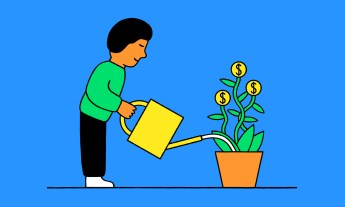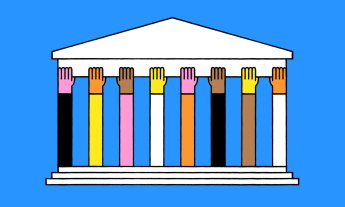
Most of us received little guidance or instruction on how to handle money when we were growing up, but that’s OK — we can start learning now, a little bit at a time. Financial expert Natalie Torres-Haddad begins with the basics.
This post is part of TED’s “How to Be a Better Human” series, each of which contains a piece of helpful advice from someone in the TED community; browse through all the posts here.
How do most of us learn how to use our money wisely and well? When we’re growing up, we’re given special instruction in important subjects — swimming, driving, sex — to arm us with info and keep us from harm.
Yet when it comes to managing our money — an activity that every one of us needs to do, every day — we receive surprisingly little preparation. We’re not taught much about it in school, because education systems leave it to us to learn from our families and friends. However, those people often don’t fill in the gaps because money can be such a loaded or taboo topic.
Natalie Torres-Haddad, who grew up in southern California, saw many people around her struggling with debt and financial instability. She was determined to be the exception, and she purchased her first rental property in her early 20s and earned an MPA in Finance & International Business. In the process, however, she became buried in debt. Only by teaching herself the basics of money — basics that she’d never learned — was she able to steady herself and her finances.
Today she leads workshops and sessions to prevent others from falling into the money pit. (She’s also the author of the self-published Financially Savvy in 20 Minutes). She’s found that even among the college-educated people she meets, “the majority feel confused and overwhelmed about balancing their income and expenses,” she says. The stats show they’re not alone. A 2015 Ohio State University study reported nearly 70 percent of college graduates in the US say they don’t feel equipped to manage money and deal with their debt.
Not only must we get up to speed on the basics, we also need to start having honest conversations with each other about money, says Torres-Haddad. In the same way we’d tell family and friends that we’re cutting out refined sugar from our diets or practicing yoga to increase our flexibility, we should be open with them about the steps we’re taking to boost our financial health. That way, we can get advice and support. This transparency, she adds, can also make us less susceptible to peer pressure-related spending. How many of us have agreed to a pricey meal or weekend trip because we didn’t want to come clean about our money concerns?
Becoming financially literate does not require a huge time investment. Torres-Haddad believes we can start by dedicating 15 – 20 minutes a day to developing our skills and knowledge by learning new terms and resources. Just like attaining literacy in a foreign language, she says, “it’s an ongoing education.” Here are three things you need to know about your money.
1. Know how much money you’re bringing in every month vs. how much you’re spending
Most of us can rattle off our salaries in our sleep, but could you do the same for your monthly after-tax income and where you’re spending your money every month? If you can’t, that’s normal. But now is the time to learn your actual take-home pay and your actual expenses (and not just ballpark figures or estimates).
For your income, look at your physical or online pay stubs, and start keeping a record of the after-tax amounts. If you’re a salaried employee, that number should be fairly steady; if you’re not, those numbers will vary.
For your monthly expenses, Torres-Haddad suggests writing down — whether it’s in a physical or online notebook — every single daily purchase (coffee, take-out, Uber, online shopping, etc) you make and every single ongoing payment you make through autopay or credit cards (Netflix, gym membership, car insurance, utilities, etc.).
If you’ve never done this before, you may find this uncomfortable — even painful — but it will force you to face up to your spending habits. It will also make these purchases visible. Often, our regular outlays (such as Netflix, Hulu, etc.) can go unnoticed or unquestioned, and our daily spends — especially if we pay by debit card so the funds are instantly drawn from our bank accounts — can go forgotten. Torres-Haddad calls the latter “runaway spending” — “when the little things that you thought cost only a few dollars actually cost much more” in the long run. Take a daily $5 green smoothie. By making them at home, you could save yourself a few hundred dollars in a month.
After you have a fundamental understanding of income and expenses, you can download an app to help you track these categories; see your bank account, credit-card and loan balances; and organize your purchases into buckets so you can identify areas where you might cut back. Two free apps to try are Mint or Charlie, says Torres-Haddad. But, she cautions, apps can be a little “out of sight, out of mind,” meaning if you need extra help to be aware of your spending, stick with the pen-and-pad (or fingers-and-keyboard) method a while longer.
2. Know your FICO score and your other credit scores
While you don’t need to have a good credit score to be financially literate, you must know what it is. (Note: Most of the information in this section applies to people living in the US.) In the US, FICO was the first company to offer a three-digit credit-risk score for lenders to use when deciding whether or not to approve a loan or line of credit, a credit limit, and an interest rate. There are three other national credit reporting bureaus — Experian, Equifax and Transunion — which also keep track of all your loans (student, auto, personal, etc.) and your balances and histories for all your credit cards (whether issued by banks, stores or businesses).
However, the FICO score is the one most frequently used when you apply for credit cards, mortgages and most types of loans; rent an apartment; or sign up for utilities. FICO scores range from 300 to 850; 670 and up is seen as a good score and 800 and up is excellent. While the FICO score is calculated with a proprietary algorithm, the primary factors that go into it are your repayment history (do you pay your credit-card bills on time? how late are you?), how much debt you’re carrying on cards and loans, how long you’ve successfully held a credit card or loan for; and whether you’ve managed to hold a mix of different kinds of credit.
Most banks and credit cards offer free access to your FICO score on their mobile apps and websites (here’s a list of the ones that do). If you don’t use one of these companies, you can also find out how to access your score on FICO’s helpful FAQ, including a chart showing where your score falls between “Poor” and “Exceptional.”
Besides checking your FICO score every year, do an annual check of the reports issued by Experian, Equifax and Transunion. This is so you can verify that they’re correct, make sure no one has opened up a line of credit in your name, and see where you might improve. You are entitled to a free copy of a credit report from each bureau once a year. Beware: Many sites will charge you a fee, so use the federally approved and secure Annual Credit Report site.
If it’s your first time checking or you’re about to make a big purchase (such as a car or a home), Torres-Haddad suggests getting all three reports at once. After that, she recommends spacing them out throughout the year. That way, you can quickly catch any errors, fraud, identity theft or any other actions that could hurt your credit history. Mark your calendar so you know when you can request your next free credit report.
3. Know how much credit card debt you’re carrying
Knowing how much credit-card debt you’re carrying — and how quickly it’s increasing due to interest — is critical to your financial literacy. Make a list (on paper or on a computer) of each of your credit cards, their current balances, and their current interest rate. Then, put them in order from highest interest rate to lowest.
In general, says Torres-Haddad, this should be how you should prioritize paying them off, paying as much as you can towards the card with the highest interest rate while paying the minimum on the other cards. Called the “debt-snowball method,” this was popularized by money expert Dave Ramsey.
If you have any cards that offered a 0% APR as a promotion when you signed up, mark down the date on which the promotional rate expires because that’s when you can expect your debt to accumulate at a high interest rate (20% or more). Try to budget your monthly payments so that this card will have little to no balance when that expiration date arrives.
Believe it or not, having a credit card can be a great thing for a person’s FICO and credit scores — if you use it responsibly. Of course, carrying no debt on your cards is best. Otherwise, Torres-Haddad recommends using no more than 30 percent of your available credit limit. So if you have two credit cards with limits of $6K apiece, totalling $12K in available credit, make sure the total balances you’re carrying do not exceed $4K.
If you’ve managed to pay off a credit card, congratulations. But while you may be tempted to close it, Torres-Haddad advises against it. Why? Closing the account will shrink your total amount of available credit and cause your credit score to dip. Instead, delete the card number from any online shopping accounts, cancel any auto-pays billed to it, and freeze the card in ice. It may sound silly but it means that if you want to use it, you’ll be forced to wait for it to defrost — and forced to take a little time to think about your purchase.
When choosing a new credit card, look for ones that offer incentives — such as travel points or cash back — which could help you and your finances. Torres-Haddad recommends going to nerdwallet.com and bankrate.com to compare credit card offers.
Obviously, these three points represent just a small part of financial literacy. That’s why Torres-Haddad urges people to be patient and to learn gradually. Two books she recommends are Napoleon Hill’s Think and Grow Rich! and Robert T. Kiyosaki’s Rich Dad, Poor Dad. For those who like to get information through listening, she suggests the “Popcorn Finance” and “Her Dinero Matters” podcasts.
When you can, supplement your research with an in-person workshop, adds Torres-Haddad. “Even going to one financial literacy workshop can have a life-changing effect,” she says. A good time to find free workshops is April, which is Financial Literacy Month in the US. One of the best investments you can make in your life is to educate yourself about money, says Torres-Haddad. “It can really give you a lot of peace of mind.”
Watch her TEDxDavenport talk here:












